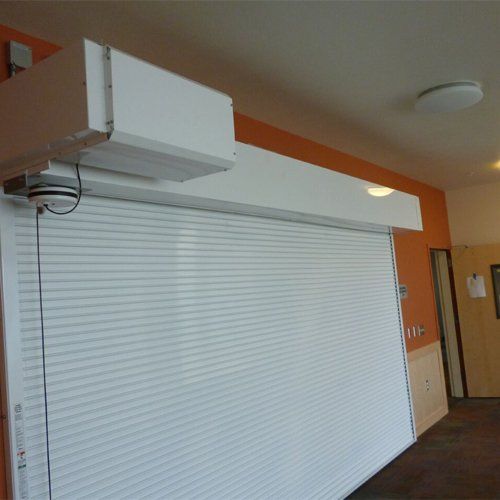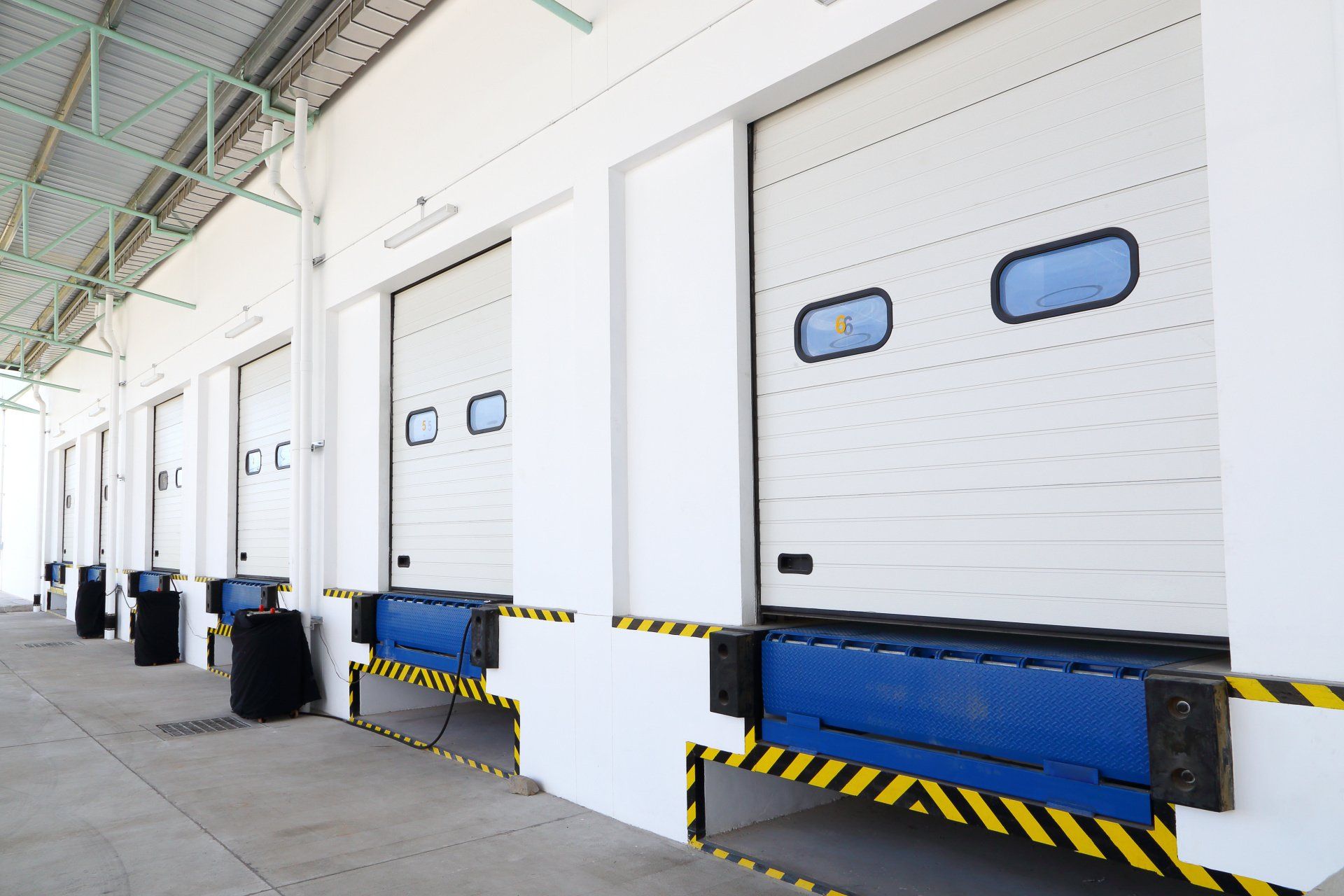How to Adjust Your Storefront Door Closer Speed
Storefront door closers play a crucial role in maintaining the functionality and security of your business's entrance. However, there are times when adjustments are necessary to ensure that your door closer operates at the right speed and performs effectively. In this comprehensive guide, we will walk you through the process of adjusting your storefront door closer speed and provide valuable insights into troubleshooting common issues and knowing when it's time for a replacement.
Before diving into the adjustment process, it's essential to understand the skill and tool requirements:
- Skill: Adjusting storefront door closers requires a certain level of know-how and patience.
- Tools: You will need a ladder, wrench, hex key, or screwdriver, depending on your specific door closer.
Process of Adjusting Hydraulic Valves
Automatic door closers rely on hydraulic valves to control the closing speed. It's crucial to handle these adjustments with care, as even small turns can significantly affect the door's closing speed.
Application of Adjustments: Hydraulic valves are responsible for regulating the door's closing speed. Make sure you're prepared to make sensitive adjustments, as a mere five-degree turn can have a noticeable impact.
Making a Storefront Door Close Tighter
If your storefront door isn't closing tightly, you can make adjustments to improve its performance. Here's a step-by-step guide:
- Commercial Door Hydraulic Closer Inspection: Start by inspecting your commercial door hydraulic closer for any visible issues. Ensure there is no oil leakage or damage to the mechanism.
- Cover Removal Process: To access the adjustment screws, you may need to remove the cover. The cover can be made of plastic or metal and might have fasteners or be held in place by tension. Follow these steps:
- If there are fasteners, loosen them to slide the cover off.
- If there are no visible fasteners, gently pull off the cover.
- Identifying Adjustment Screws: Inside the cover, you'll find the adjustment screws responsible for controlling the door's closing speed. These screws are often marked with "S” and “L”.
- Adjustment Process: To make the door close tighter or faster, follow these instructions:
- Turn the screw clockwise to slow down the door closer.
- Turn the screw counterclockwise to speed up the door closer.
- Testing the Door Closer: After making minor adjustments, test the door's closer by opening and closing it multiple times to ensure it's operating as desired.
- Ideal Closing Time: For non-delayed action door closers, the goal is to have the door shut and latch within 6-8 seconds.
Your Storefront Door Closes Too Slowly
If your storefront door is closing too slowly and it doesn't align with your business's needs, you can adjust the close swing speed:
- Instead of manufacturing unique doors for various purposes, it's more practical to equip the closing assembly with methods for adjusting the closing speed.
- Look for a small screw labeled with an "S" to indicate its control over the close swing speed.
- To speed up the door closer, turn the screw counter clockwise. Conversely, to slow it down, turn the screw clockwise.
- Even a quarter turn can bring significant changes to the close swing speed, so make minor adjustments and test the door's performance.
Your Storefront Door Isn't Latching Properly
If you've noticed that your storefront door isn't latching properly, it might be due to the latching speed. Here's how you can address this issue:
- The latching speed controls the force at which the door closes, and it's also adjustable.
- Find a screw labeled with an "L" to indicate its control over the latching speed.
- To increase the latching speed (useful for outside doors that aren't closing fast enough), turn the screw counter clockwise.
- To decrease the latching speed (recommended for inside doors that slam shut too forcefully), turn the screw clockwise.
- Ensure that the door latches correctly, and aim for a non-delayed action door closer to shut and latch the door in 6-8 seconds.
Your Storefront Door Slams Into the Wall
If your storefront door opens too quickly and ends up slamming into the wall or other stationary objects, you can modify the back-check. Here's what you need to know:
- The back-check is an optional feature in a door closer mechanism that prevents the door from opening too quickly.
- It uses a spring or hydraulic mechanism to control the opening of the door. However, if the pressure is set too high, the door can be challenging to open.
- Look for a screw labeled with a "B" and turn it clockwise or counterclockwise to modify the strength required to pull or push the door open.
- Be cautious not to set the back-check pressure too high, as it can make the door difficult to open.
Your Storefront Door Starts Closing Too Quickly
If your storefront door closes too quickly and you need more control over its timing, you can adjust the delayed action. Here's what you should do:
- Commercial and industrial door closers sometimes come with a delayed action feature, which determines the time the door remains open before closing.
- Look for a screw marked with a "D" to indicate its control over the delayed action.
- To decrease the delay time (suitable for managing foot traffic), turn the screw clockwise.
- To increase the delay time (useful for accommodating package deliveries), turn the screw counterclockwise.
- Make adjustments in small increments and test the door multiple times to achieve the desired delay time.
Troubleshooting a Storefront Door Closer
Besides adjusting your storefront door closer, it's essential to troubleshoot common issues that may affect its performance. Here are some troubleshooting tips:
- Self-closing door hinge problems: If your door closer isn't functioning correctly due to self-closing door hinge issues, it's crucial to address these problems first.
- Warped doors or uphill swing issues: Ensure that your door is in proper condition and isn't warped. Doors that need repair may not close and lock automatically.
- Correct arm installation on the spindle: Verify that the arm of the door closer is correctly installed on the shaft. You can download instructions from the manufacturer's website to ensure proper installation.
- Fastener tightening: If the arm makes noise or bounces up and down while the door is in motion, tighten the fasteners that hold the arm to the closer, header, and knuckle that connects the two parts of the arm. This can help eliminate noise and bouncing issues.
Knowing When to Replace a Storefront Door Closer
There are situations where adjustments alone won't suffice, and it's time to consider replacing your storefront door closer. Here are some signs that indicate a replacement is necessary:
- Oil Leakage: If you notice oil leaking from your door closer, it's a clear sign that it needs to be replaced.
- Door Slamming and Unadjustable: If your door closer continues to slam the door shut, and you can't adjust it to operate differently, it's likely that the fluid has leaked out, or the valve seals are worn out. In such cases, replacing the door closer is the best option.
- Broken Spring Tension with No Effect on Adjustment: If your door closer has no spring tension, and adjusting the spring tension has no effect, the spring is likely broken, and it's time for a replacement.
Compliance with Safety Regulations
It's essential to ensure that your storefront door closer complies with safety regulations, especially if you operate in specific industries or locations. Here are some considerations:
- ACHC Regulations for Fire Doors in Healthcare Facilities: In healthcare facilities and various other industries, regulations may require automated closing assemblies on fire doors. This ensures that doors close automatically during a fire, helping to slow the spread of smoke and flames. Compliance with these regulations is crucial for safety.
- Role of Automatic Door Closers in Fire Safety: Automatic door closers play a vital role in fire safety, ensuring that doors close automatically during a fire emergency. This feature is essential for preventing the spread of fire and smoke.
- Ensuring Proper Door Closer Adjustment for Regulatory Compliance: To meet safety regulations, it's important to ensure that your storefront door closer is adjusted correctly. The closing and latching speeds should align with safety requirements to prevent any issues during emergencies.
Conclusion
Adjusting your storefront door closer speed and addressing common issues are essential steps to maintain the functionality and safety of your business's entrance. By following these guidelines and knowing when it's time for a replacement, you can ensure that your door closer operates efficiently and complies with safety regulations. Properly functioning storefront door closers contribute to the security and accessibility of your business premises.


REQUEST ESTIMATE OR SERVICE CALL
Call the guys that care.
10235 Systems Pkwy, Suite B
Sacramento, CA 95827
Contractor's License: 1118556
All Rights Reserved | Industrial Door Company



